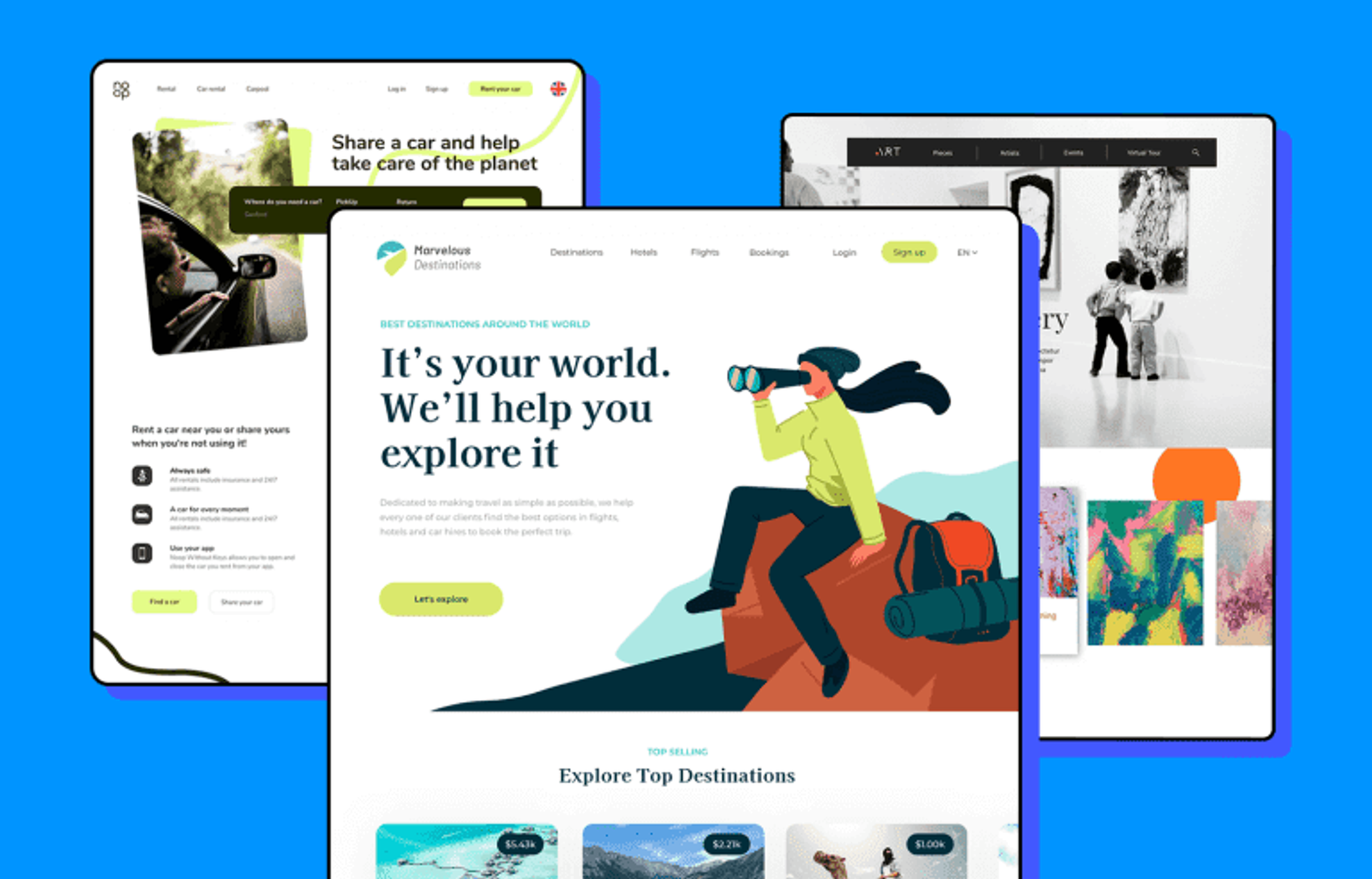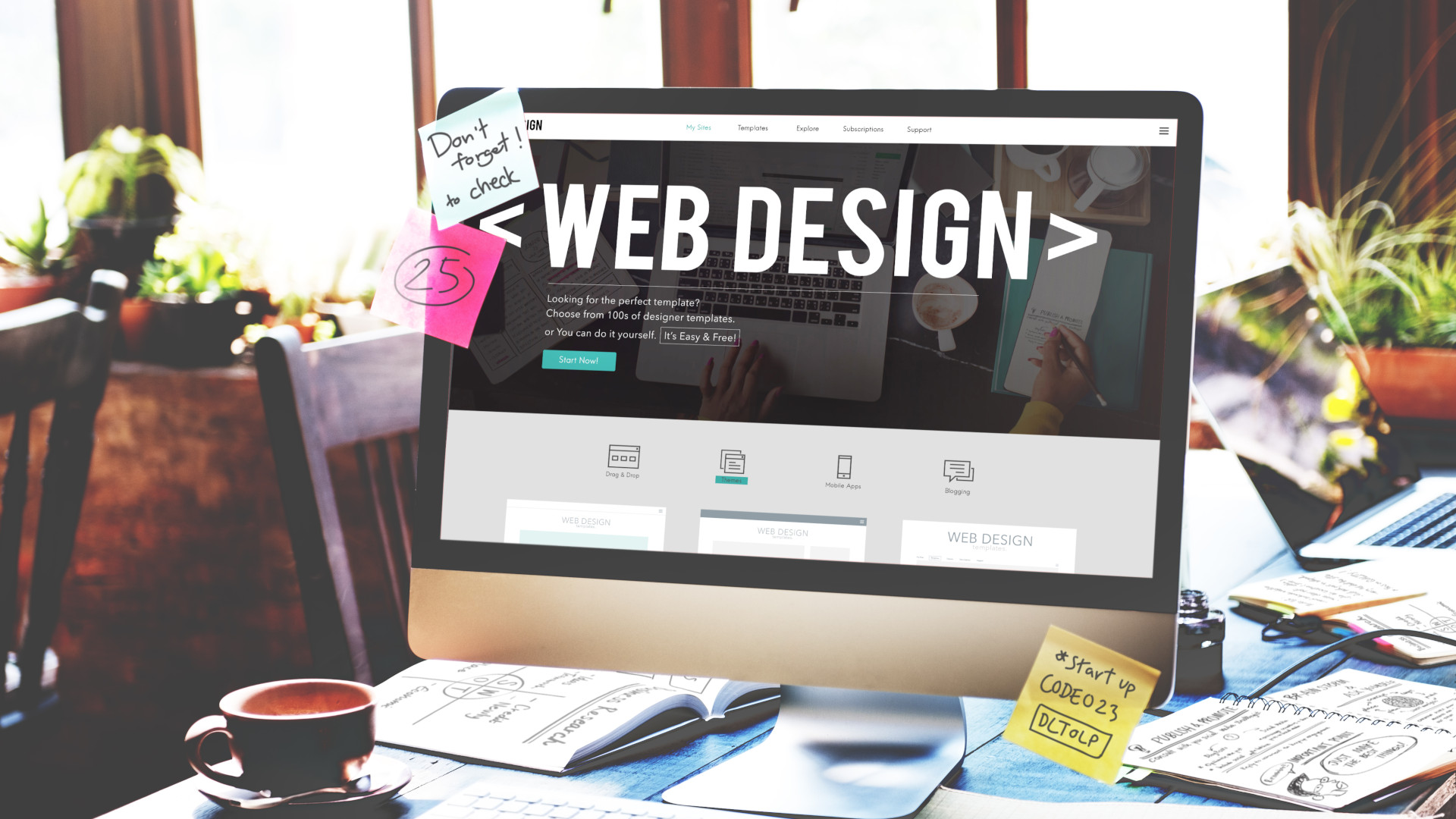The Most Effective Sorts Of Web Style to Boost User Experience and Engagement
In the ever-evolving landscape of electronic interaction, the performance of website design substantially affects customer experience and engagement. Various layout strategies, such as minimalist, responsive, and interactive layouts, each deal distinct benefits that can accommodate diverse customer requirements. Understanding which kinds of website design ideal serve these goals can be crucial for businesses intending to improve customer fulfillment and retention. The question stays: which style aspects genuinely reverberate with users and foster meaningful interaction? The exploration of these principles reveals important understandings that might redefine your approach to website design.
Minimal Web Design
As digital landscapes become increasingly chaotic, minimalist website design has actually emerged as an effective approach to enhancing customer experience. This layout philosophy focuses on simpleness, concentrating on necessary aspects while removing unneeded disturbances. By using adequate white space, straightforward navigation, and a minimal color scheme, minimal design cultivates quality and routes customer interest to key web content.
The core principle of minimalist website design is to produce a seamless communication for users. By minimizing cognitive tons, customers can swiftly realize details without really feeling overwhelmed. This straight method not only enhances usability yet also motivates engagement, as site visitors are most likely to check out a site that is aesthetically attractive and very easy to navigate.
In addition, minimalist design commonly stresses typography and imagery, utilizing these aspects purposefully to convey messages efficiently. In essence, minimal Web design is not just a fad; it is a thoughtful methodology that recognizes the significance of user-centered style.
Responsive Web Style
In today's varied electronic atmosphere, receptive website design has become vital for producing a smooth customer experience across a wide range of gadgets. As individuals gain access to sites on mobile phones, desktop computers, laptop computers, and tablets, the capability of a website to adjust its design and material to different screen sizes and resolutions is crucial.
Responsive Web style uses flexible grids, pictures, and CSS media inquiries to make certain that Web material exists ideally, no matter of the gadget made use of. This technique not just boosts the visual appeal of an internet site yet additionally significantly improves functionality. Customers are more probable to engage with a website that offers a constant experience, as it eliminates the irritation of having to zoom in or scroll excessively.
Furthermore, online search engine, consisting of Google, focus on mobile-friendly web sites in search positions. By embracing receptive style, organizations can boost their presence and get to a more comprehensive audience. This method also simplifies website maintenance, as a solitary version of the website can deal with all gadgets, reducing the demand for numerous variations. In recap, receptive website design is an essential method that enhances customer experience, involvement, and general satisfaction.
Interactive Web Design
Receptive website design prepares for enhancing individual experience, however interactive Web design takes this an action additionally by engaging customers in a much more dynamic means - Aligned Position Web Design. By incorporating elements such as computer animations, clickable prototypes, and real-time responses, interactive Web style astounds users, drawing them into a richer surfing experience
This technique not just cultivates involvement however also urges individuals to explore material proactively instead of passively eating it. Techniques such as gamification, where users make rewards for finishing tasks, can substantially enhance the time invested in a site and improve total satisfaction. Interactive features can simplify complex details, making it much more satisfying and digestible.

Integrating interactive design aspects can also result in higher conversion prices, as users are a lot more most likely to involve with a website that actively entails them. Aligned Position Web Design. Inevitably, interactive Web style transforms customer experiences into memorable trips, making certain that visitors return time and again
Flat Layout
Characterized by its minimalistic approach, flat style emphasizes simplicity and functionality, removing unnecessary components and concentrating on crucial features. This layout ideology prioritizes functionality, making sure that customers can browse user interfaces effortlessly and efficiency. By employing a clean aesthetic, level layout removes the mess often found in more ornate designs, therefore boosting individual concentrate on web content and capability.
The characteristic of level style hinges on its use bold colors, straightforward typography, and geometric forms. These aspects add to an aesthetically enticing user interface that is both approachable and modern. In addition, flat design promotes a sense of clarity, permitting individuals to discern essential activities and info without disturbance.
Moreover, flat layout is especially effective in receptive Web design, as its simpleness equates well across numerous devices and display sizes. The absence of detailed structures and gradients decreases packing times, which is crucial for keeping individual involvement. As digital landscapes proceed to progress, level design remains a pertinent option for developing easy to use websites that improve total experience. By concentrating on vital attributes, flat layout not only satisfies customer requirements yet also urges smooth interaction, making it a crucial component of effective Web design methods.
Adaptive Website Design
Adaptive website design tailors the user experience by creating several taken care of designs customized to various screen dimensions and gadgets. Unlike responsive design, which fluidly changes a single format, adaptive layout utilizes unique layouts for specific breakpoints, making certain optimal discussion on different systems. This method permits developers to concentrate on the one-of-a-kind characteristics of each device, enhancing use by delivering specifically what customers require based upon their context.
One of the main advantages of flexible website design is its capability to enhance load times and performance. By offering tailored content and photos that you can try this out fit the customer's gadget, web sites can reduce data use and improve loading speeds. This is specifically beneficial for customers with slower links or restricted data plans.

Furthermore, adaptive style facilitates a much more constant and controlled branding experience. Given that designers produce several formats, they can make sure that the visual components align with the brand's identification throughout various systems - Aligned Position Web Design. This results in a cohesive individual experience, boosting Going Here engagement and promoting individual retention
Final Thought
To conclude, the combination of minimal, receptive, and interactive Web layout principles considerably improves individual experience and involvement. Minimal design fosters clarity and focus, while responsive style ensures versatility throughout different tools, advertising access. Interactive layout astounds users with dynamic aspects, motivating exploration and personalization. Collectively, these design approaches contribute to the creation of user-friendly environments that not only improve complete satisfaction but also drive greater conversion prices, highlighting their essential relevance in modern website design techniques.

Minimal style promotes quality and emphasis, while browse around this web-site responsive design guarantees versatility throughout numerous gadgets, advertising availability. Jointly, these style comes close to contribute to the development of easy to use atmospheres that not just enhance contentment yet additionally drive greater conversion prices, highlighting their important value in modern Web style techniques.